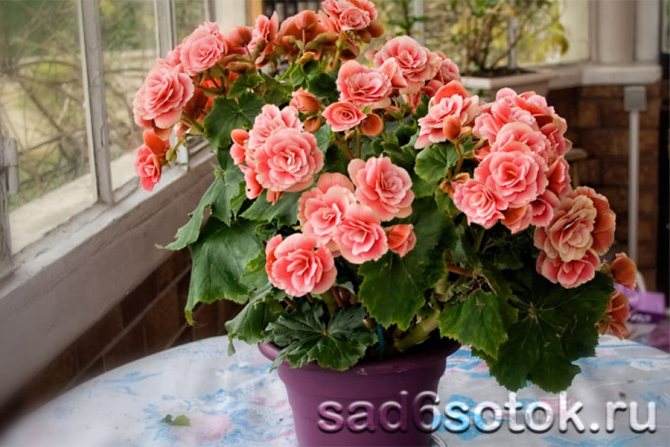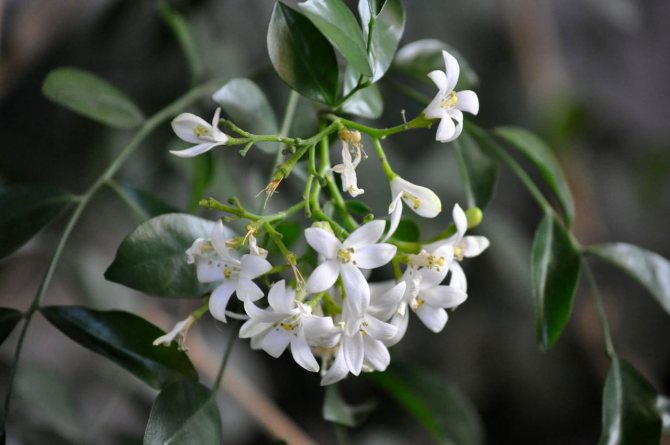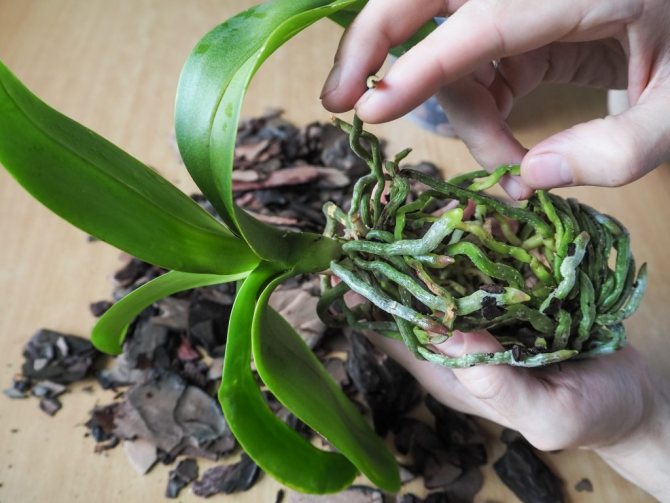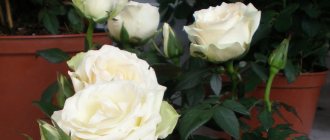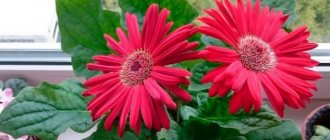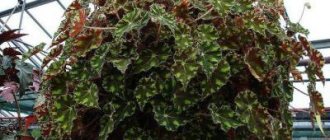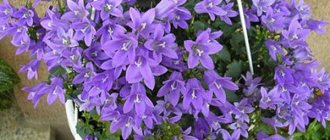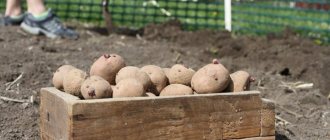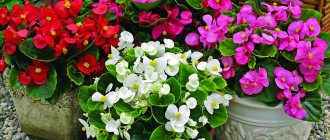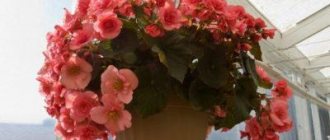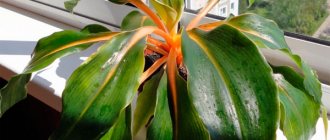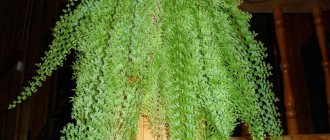Begonia at home in winter
A completely unpretentious flower - begonia - grows on the windowsill in almost every apartment. This plant is loved not only for the variety of shades and shapes of flowers, but also for its beautiful foliage pattern. There are rhizome and tuberous species - both are very decorative and in the summer they can decorate gazebos and verandas.
Like many home-cultivated plants, begonias also have a dormant period in winter. In order for the plant to gain strength and not die at this time, it needs some care, or rather, the correct preparation for hibernation. Winter begonia care is necessary in any case, but for tuberous and rhizome species it is radically different.
When is the dormant period?
Violent flowering ends in begonia at the end of September. The buds dry up and the plant changes noticeably - the foliage loses its color, and after a while the cuttings wither and fall off. This is the case with tuberous begonia, for which home care in winter is reduced to monitoring the state of the soil during the dormant period of the plant.
Should you dig up the tuber?
If begonia grew on the street, then before the frost it must be brought into the room by all means, because it cannot stand the cold.
If the tuber of the plant was in the open ground, then it is carefully removed from the ground, trying not to damage it. It can be stored in wet sawdust or sand at a temperature not exceeding 10 ° C.
Those begonias that grow in containers or flowerpots can remain for the winter in the same form, only you will need to remove the wilted leaves, change the soil to fresh in the spring.
Rhizome begonia care
At home, in winter, caring for such a begonia, which is also called royal, does not shed foliage like a tuberous one, but stops growing. The best thing now for the plant will be to water it from time to time, preventing the soil from drying out. But also extra water in winter begonias are not needed, since with an excess of moisture, the root can begin to rot, especially if the air temperature is not high.
The plant can be transferred to a cool room, where it will winter quietly, but it can also be left on the windowsill, pouring a small amount of warm water once a week. The plant does not need fertilizers in winter; they can begin to feed begonias closer to spring, since the required rest period for begonias is from three to four months.
Reproduction
There are four ways of propagation of plants of the begonia family: cuttings, leaves, tubers, seeds. Florists recommend getting shoots by grafting begonias or growing shoots from leaves. Tuber propagation may not be successful. If you do not know how to manipulate, then you can lose the entire plant. Is it worth the risk if tuberous species can also be propagated by cuttings or foliage?
Growing a plant from seed is not the best solution. When vegetative propagation is available, choosing a seed method seems counterintuitive. This method is only relevant if you have purchased some rare seed variety. In other cases, it is better not to use seed germination - it is long and not always effective.
By cuttings
- Cut off the top of the plant. You should have a stalk 6 to 10 cm long.
- Plant the cutting in a container with moist, loose soil.
- Cover with a jar and wait for the cutting to take root and grow. This takes an average of three weeks.
- Do not forget to pour water into the pan all this time. Be guided by the drying out of the soil.
- When the stalk grows up, start accustoming it to indoor conditions - open the jar and let it breathe for a while.
- The next stage is planting a new plant.
Cutting is a universal method. It is suitable for all stemmed begonias.
Sheet
- Take a sharp knife, cut off the leaf from the cutting. Pre-inspect the sheet: it must be healthy.
- Pour filtered water into a glass, dissolve a previously crushed activated carbon tablet.
- Place the leaf in water. Watch out for him: if the petiole rots, cut it off, without sparing, to a healthy part, change the water.
- If you saw that the roots were formed, plant them. The new plant will grow - the leaf will dry out.
Leaf propagation of begonias is optimal for varieties with small leaves. Large sheets take root badly: the roots that are not yet fully strengthened cannot provide them with sufficient nutrition. In this case, reproduction by a leaf segment is relevant: it is laid on moist soil, pressed with a pebble, made a "greenhouse" and wait for the sprout to appear.
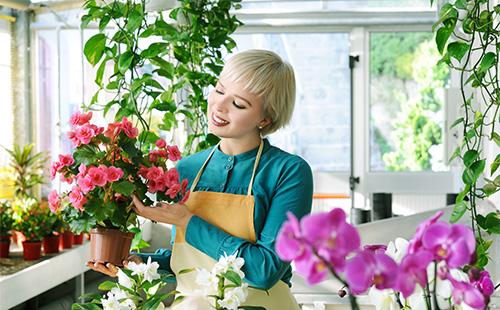
Begonia - home care, especially proper cultivation
Her homeland is tropical and subtropical regions of America and Asia. It appeared in Europe in the 17th century. It got its name from Michel Begon, who described it. At first, begonias were grown in greenhouses, then varieties were bred that are resistant in the European climate.
Begonias are divided into decorative deciduous and decorative flowering. The largest distribution among the flowering of this species is tuberous. Homemade begonia, which is popular in our country, belongs to the tuberous.
Plants prefer light, loose soil. You can buy ready-made potting mixes for begonias in stores.
Begonia at home in winter
Plants love moderate temperatures; in winter, it should not be allowed below 15 degrees.
In the dry season, the leaves can be lightly sprayed without getting water on the flowering areas. Water with soft water, the begonia in the pot should be in moist soil, but without stagnant water. Water twice a week in summer, daily in hot weather.
In autumn, watering should be reduced to a minimum; in winter, watering is practically stopped, since indoor begonia is at rest at this time. Gradual watering begins in March - April. In May, they begin to fill in with water normally.
After the buds have fallen, it is important to transfer the tuberous to the shade, water it occasionally. After two weeks after the death of the aerial part, dig out the tuber and place in wet sand. Store at 13 degrees, keeping the sand moist. In January they are spread on the ground, after germination they are planted in pots. When the plant organism fills all the space in the pot with roots, it is transplanted. Care should be taken, the roots are very fragile. Be sure to pour drainage into the pot so that the flowering begonia does not suffer from stagnant moisture.
This beautiful miracle of nature can be propagated by cuttings, royal - by cut leaves. Cuttings with three leaves are cut and rooted in moist soil for 1 month. Sowing with seeds should be started in early March. Sow on moist soil without sprinkling it with earth. Cover with glass, pour only into the pallet. Seedlings will appear in about two weeks. After two months, the angiosperm can be dived.
You can buy a chic begonia in the Flowers for Life online store, where you can also buy fertilizers or order a flower transplant service.
The catalog of indoor flowers contains a large assortment of plants for the home, among which you can choose the one you like.
In summer, plants can be planted in a flower bed. Pour the substrate for seedlings of this type into the holes. For planting, you can use saplings, or you can buy begonias in gardening stores. Plant in June when warm weather settles around the clock.
If the seedlings are planted in a special fresh substrate, they will not need feeding. If the indoor begonia flower grows in the old soil composition, it should be fed with fertilizer for flowering plants. Decorative deciduous varieties are fed with a fertilizer created for them. You can buy them in specialized stores. Use in accordance with the instructions on the package.
In the White Orchid flower salon you can buy tuberous begonia grown by our greenhouse specialists. Tuberous begonia is marketed in bloom.
The flowers of the tuberous begonia are large, double or semi-double, have a variety of colors - from white to scarlet-red. Begonia grown in the "White Orchid" greenhouse does not need replanting, because grown in leafy ground.
Begonia care at home.
Tuberous begonias love light, fertile soils with a slightly acidic reaction. The best substrate for planting is leafy soil.
Pots for planting tuberous begonias use low ones, plastic pots are more preferable.
Lighting for begonias should be good, diffused light is preferable, so the best place to place will be east, southeast windows, where there is no scorching midday sun. The best temperatures during the development of begonias are from 15 to 25 degrees.
Watering tuberous begonias.
Tuberous begonias are watered abundantly, but between waterings they allow the ground to dry out 0.5 cm deep into the pot.
It is best to water begonias like this: put the pot with the plant in an empty deep container, then spill the substrate from the watering can or ladle so that the water comes out of the pot, you can let it stand in the water for 10 minutes, then the plant is placed on a tray and after a while (10 minutes -15), excess water from the sump must be removed.
If you do not remove the water from the pan after watering, then the tender roots of begonias die from waterlogging.
Top dressing of tuberous begonias.
In order for the tuberous begonia to bloom magnificently, it must be fed.
For fertilizing flowering begonias, the Forte liquid fertilizer for flowering plants is very suitable. Begonias are fed once every 2 weeks. Fertika-Lux fertilizer can also be used. In August, feeding is stopped, and watering is also reduced - begonias begin to prepare for a state of winter dormancy.
Preparing tuberous begonias for winter.
Begonias grown from tubers are dug out of pots in September - October, cleaned, dried, sprinkled with peat and stored. The storage temperature of tubers should be no higher than 10 degrees.
In begonias grown from seeds, a small nodule grows during one growing season, so such begonias are not sent for wintering. Begonias grown from seeds are left to winter on the windowsill. They try to choose a bright cool window for them, and occasionally water them. The lower the temperature on the window, the less watering will be. With the onset of spring, the elongated shoots are cut off, and young strong shoots will soon appear to replace them.
Tuberous begonia
This begonia is propagated by seeds, tubers and cuttings. The begonia is cut as follows: the cutting is cut so that one bud remains on the stem - a new stem will grow from it, while the tuber is not disturbed.
Watering
The frequency and amount of watering depends on the season. In summer, you need to water the plant about 1 time in 3 days.
When the earthy coma dries out, it is better not to increase the frequency of watering, but to place containers with water next to the plant or spray it indoors. It all depends on the state of the earth in the pot. If the soil is still damp, there is no need to water the flower.
In winter, water the plant less often, once every 7 days. Tuberous begonias are watered even less frequently.
The best way to water the plant is to put water in a pan and wait until the soil in the pot is moist.
IMPORTANT!You need to water the flower with settled water. Ideally filtered and softened with peat. For this, peat is soaked in an amount of 1 kg per 10 liters, the resulting liquid is used to moisten the soil.
Home begonia care
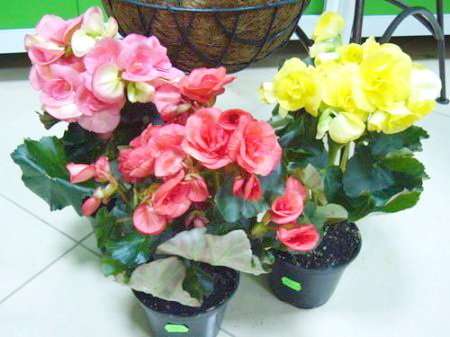

Begonia home care - photo
Begonia is a beautiful plant that looks great in any square or park, as well as in a garden or apartment. This flower is from the Begoniev family.
In total, there are approximately 900 full-fledged and 2000 hybrid species of begonias. The first description of this flower was given by Michel Begon in 1960.
Begonia history
Begon described this flower when he saw it in the Antilles. Begonia got its name in his honor. Later they began to describe this flower in other countries. Begonia is in high demand.
Depending on the decorative features, begonias are divided into groups:
- Decorative flowering;
- Decorative deciduous.
The most common type of begonia is tuberous. Such begonia is varied in color and does not require special care. Begonia prefers dark and damp areas of land, but can also grow on the shores of the sea, in the mountains and in arid places.
Useful video
In this video, you will learn more about the plant:
- Landscape Elements of landscape design Do-it-yourself planters
- Rockery construction
- Garden paths
- Lighting and illumination
- Garden sculpture
- Dry stream
- Alpine slide
- Beds and flower beds
- Flower pots
- Garden figures
- Hedges
- Lawn in the country
- Drainage of the site
- Decorative waterfall
- Playground
- dacha bakery
- Plant varieties Flowers Rosary
- Exhibitions and events
- Feedback
How to keep begonia tubers until spring? If the begonia was grown from purchased tubers, the size of which is more than 3 cm, she is satisfied with a dormant period from late November to mid-February. If the tuberous begonia is grown from seed or by cutting the leaves of an adult plant, it does not need a dormant period. The storage of begonia tubers in winter depends entirely on the age of the plant and the size of its tuber. How to prepare a plant for winter? What to do with young tubers? Experienced florists answer all questions.
Forms and types of begonias
This flower comes in a wide variety of shapes, sizes and colors. Begonia can be a small plant and a rather large shrub, with a stem or with one leaf.
Begonia flowers have different shades of color, but warm tones are more common. Leaves can be of all shades of green, and on the reverse side, one color or spots, patterns are possible.
Begonias are houseplants that bloom in both summer and winter.Decorative-flowering species have large colorful flowers, and decorative-deciduous ones have abundant foliage, but their flowers are not so beautiful.
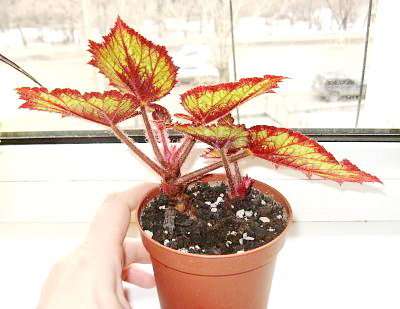

Subtypes of flowers
- Blooming begonias densely covered with inflorescences of various shades: white, pale yellow, orange, pale pink, scarlet, bright red. The texture of flowers is terry and semi-double.
- Decorative deciduous varieties They are distinguished by a juicy green shade of leaves that have various shapes and sizes. This species does not have beautiful, decorative colors.
- Tuberous begonias grow up to 50 cm in height, have a strong stem and large double flowers. Tuberous varieties are used for outdoor and home growing.
Transfer
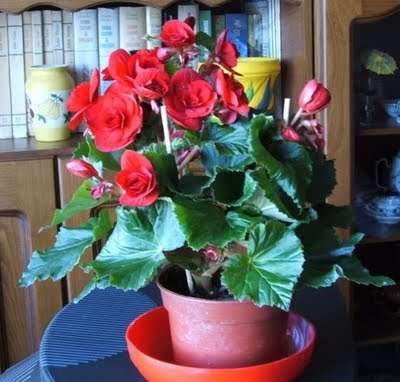

The soil for transplanting can be purchased at a specialty store or you can make it yourself.
In order to prepare the soil, the floor of the pot is filled with sheet sand, then peat and black soil are added one to one, and there should be not a lot of sand at the bottom of the pot.
Transplanting begonias is only necessary when the pot is already small for the plant. The best time for this is the beginning of spring. Begonia must be carefully removed from the pot, placed in water with potassium permanganate, and then cut off the roots that have already rotted.
It is not necessary to fill the pot completely with earth, you need to wait until the roots of the begonia dry, and then add earth. When the plant is transplanted, it needs to be watered more often and carefully tended for some time. The engraftment period is about a month.
What to look for when buying
Have you been looking closely at begonias on the shelves of flower shops for a long time and finally decided to get a "beauty"? Choose your flower carefully! It is important to buy a healthy plant, then it will delight you for a long time.
Examine the leaves carefully: they should be firm, without stains. Gently flip the leaves over and check for insects, cobwebs. Experienced flower growers recommend choosing specimens with half-open buds: a tropical guest will get used to a new home and will delight you with lush flowering, while a flowering plant can lose inflorescences from a change of scenery.
Have you decided to grow a begonia from a tuber? Choose small and firm ones. If there are brown spots, it is better to refuse to purchase: they indicate inadequate storage conditions.
If it so happens that you have purchased a plant with insects, try to reanimate it immediately. Place the pot with begonia in the shade (be sure to separate from other indoor flowers) and treat it with special insect repellent. Do not disturb the plant for about a week, and then feed and take care of it - the tropical guest will rise.
Diseases and pests of begonia
Begonia leaves and petioles are susceptible to fungal diseases. The most common cause is excess moisture. If such a problem occurs, you need to remove the damaged areas and reduce the amount of watering.
The most common pests are red spider mites and aphids. In order for begonia not to suffer from them, it is necessary to spray it with special solutions.
The most common problems when growing begonias
One of the common questions that arise when caring for a plant is the lack of flowering. The reason may be a lack of sunlight, low air humidity, improper temperature conditions, draft or excess fertilizer. It is necessary to change the conditions for the plant, if this does not help, perhaps the problem is at the root.
Another problem is falling buds. The reason may be abundant watering or lack of fertilizer in the soil.
Sometimes begonia leaves turn yellow - this is due to insufficient watering and depleted soil. Also, the problem may be in pests that have wound up in the soil and harm the flower root. In this situation, it is better to transplant the plant, having previously washed it in water with potassium permanganate dissolved in it.


